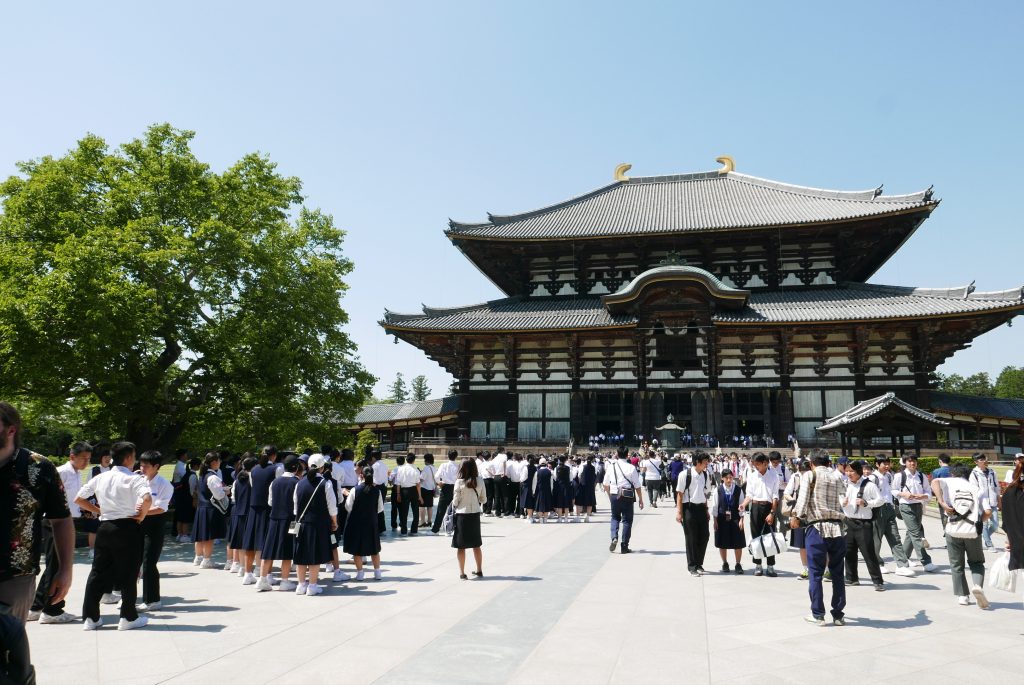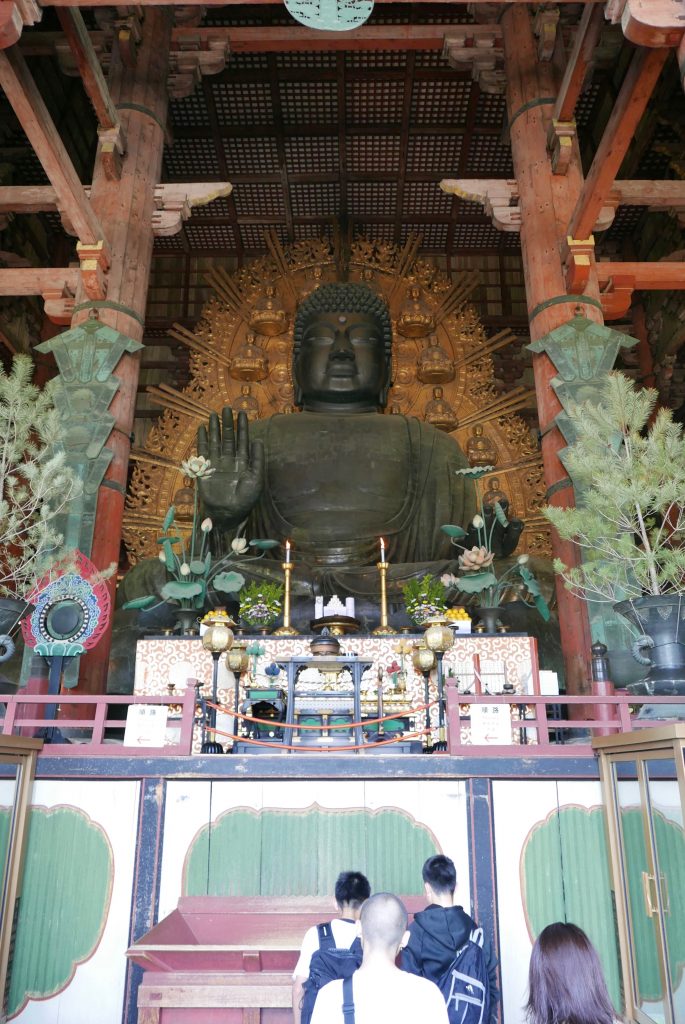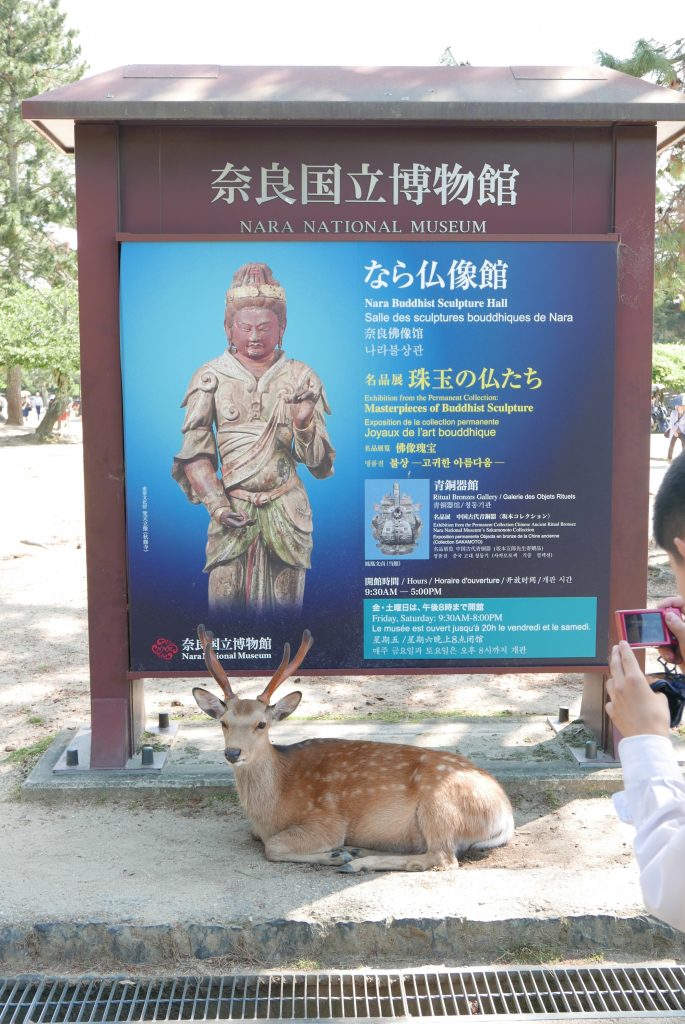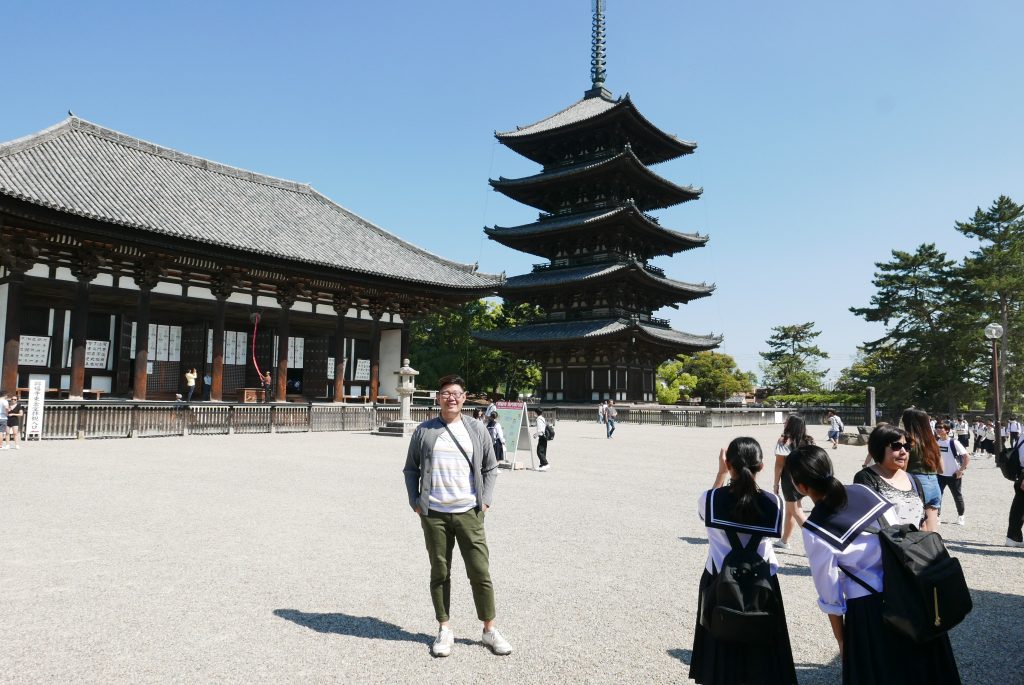Ask anyone who as ever been to Japan on where to go and what to see and experience, and one of the top places they would recommend is Nara Park and I was more than excited to finally visit it.

Located at the heart of Japan’s ancient capital of Nara, Nara Park is just a short 40-minute commuter train ride from the Kintetsu Namba station. Exiting the Kintetsu Nara Station, it was just a short walk to the edge of the park.
Established in 1880, the park (one of the oldest parks in Japan) is the location of many cultural heritage sites, national treasures, temples, and museums. The park is also famous for its over 1,500 sika deer which roam the park freely. An official symbol of the city, the deer have learned to bow to ask visitors to be fed crackers which are on sale around the park.

I was amazed at how tame the deer were, though I can forewarn you that the deer are still considered wild animals and can get overly enthusiastic when one has deer crackers in their hand.
A spot of culture
A fifteen minute walk from the Kintetsu Nara Station brings you to the Nara National Museum. Established in 1889, the museum retains its original building and is joined by a new wing that is connected to the original building by an underground passage.
Inside, the museum houses a treasure trove of Japanese Buddhist art and artefacts which include Buddhist statues, paintings, scrolls and ceremonial objects mainly from ancient Japan. The underground passage also has an informative exhibition in multiple languages, on the many different poses and hand gestures of the statues and what they represent.

The original museum building in itself is also a wonder. Completed in 1894 in the French Renaissance style, the original museum building of the museum is a representative Western-style building of the Meiji period and has been designated an Important Cultural Property in Japan.
The largest wooden building in the world
Just a short walk from the Nara National Museum is Todai-ji. Literally meaning the Great Eastern Temple, Todai-ji is is one of Japan’s most famous and historically significant Buddhist temples. The temple’s massive main hall, the Daibutsuden is said to be the largest wooden building in the world, despite the fact that the current building which was a reconstruction built in 1692 is said to be only two-thirds of the original halls size.
Inside, the hall houses a massive 15-meter tall seated Buddha and is flanked on the sides by two Bodhisattvas. There are also several smaller Buddhist statues and models of the former and current buildings.
A long queue of students led me to another popular attraction within the Daibutsuden, a pillar with a small hole in its base which is the same size as the seated Buddha’s nostril. It is said that those who can squeeze through the hole will be granted enlightenment in their next life.

Aside from the Daibutsuden, there are a number of smaller temple halls and interesting sites around the Todaiji Temple complex which should take up a fair bit you time to discover and explore.
Soaring heights
Located closer to the Kintetsu Nara Station, Kofukuji Temple used to be the family temple of the Fujiwara, the most powerful aristocratic clan during much of the Nara and Heian Periods. The temple was established in Nara at the same time as the capital in 710. At the height of Fujiwara power, the temple consisted of over 150 buildings.
The temple features several buildings of great historic value, including a five-storied pagoda and a three-storied pagoda. At 50 meters, the five-storied pagoda is Japan’s second tallest wooden pagoda, just seven meters shorter than the five-storied pagoda at Kyoto’s Toji Temple. Kofukuji’s pagoda is both a landmark and symbol of Nara and was first built in 730. It was most recently rebuilt in 1426.
While entrance to Kofukuji’s temple grounds is free and possible around the clock, there are three areas that require paying an entrance fee: The red-pillared Central Golden Hall, the Eastern Golden Hall and Kofukuji’s National Treasure Museum.
The National Treasure Museum exhibits part of the temple’s great art collection and is an absolute must-see for lovers of Buddhist art. Among the many outstanding exhibits is the three-faced, six-armed Ashura Statue, one of the most celebrated Buddhist statues in all of Japan.
Although my visit to Nara Park was a quick one, I grasp its significance as it defines Japanese culture. The balance of its temples and shrines juxtapose nicely with the beauty nature and is truly one wonderous spot in Japan that is worth the visit.






